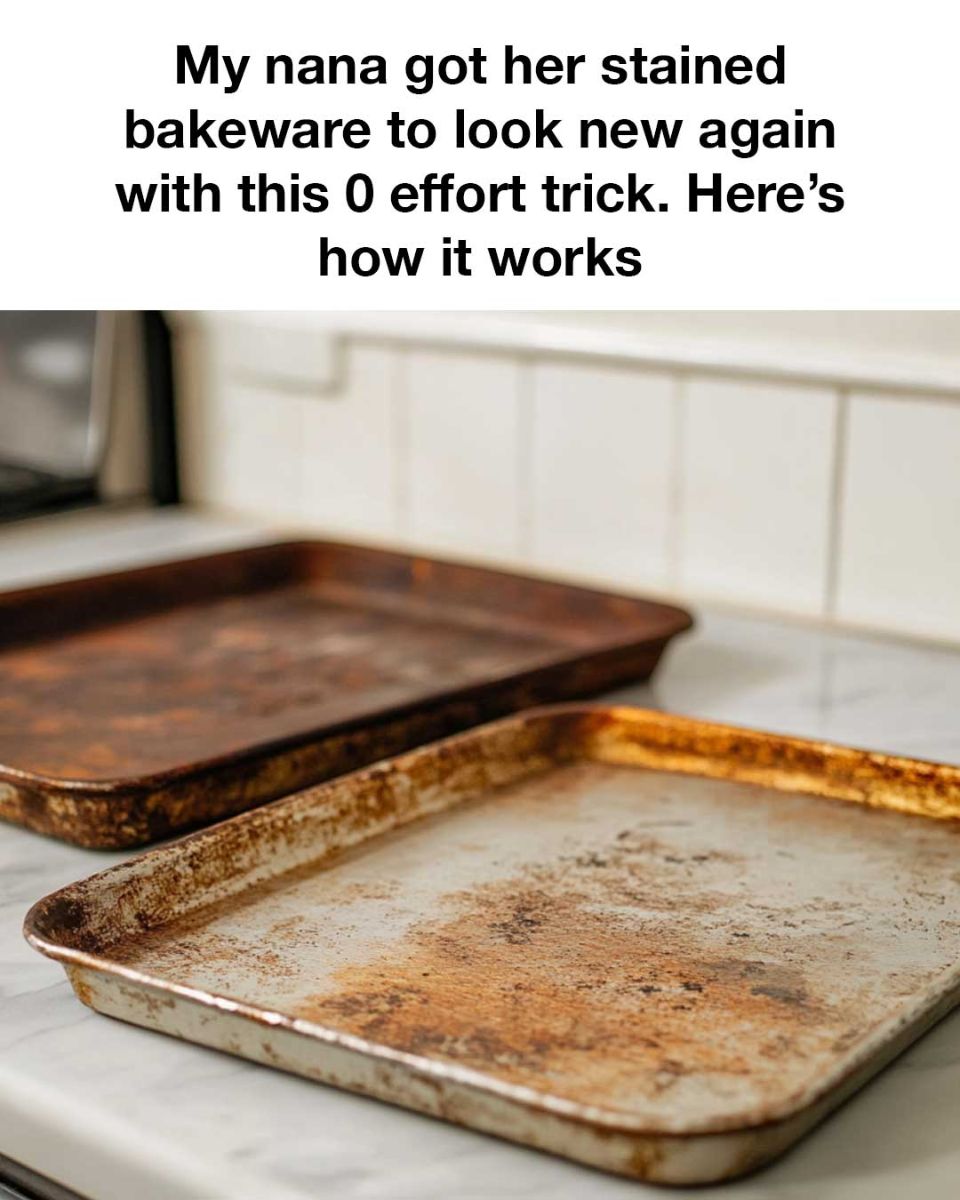The magic behind this trick lies in the chemical reaction between baking soda and vinegar. When combined, they create carbonic acid and release carbon dioxide gas, which helps to break down and lift grime and stains. Baking soda acts as a mild abrasive that further dislodges particles, while vinegar’s acid dissolves grease and organic residues. Dish soap adds a final touch, breaking down any remaining oils and ensuring a spotless finish.
Comparing Traditional Cleaning Methods to the Effortless Trick
Traditional bakeware cleaning methods often involve vigorous scrubbing, soaking, and the use of harsh chemicals. Not only are these methods labor-intensive, but they can also damage your bakeware over time. In contrast, my nana’s effortless trick saves you time, protects your bakeware, and uses gentle, non-toxic ingredients. This method is not only effective but also preserves the longevity and quality of your bakeware.
Real-Life Success Stories and Testimonials
Since discovering this trick, countless individuals have been raving about its effectiveness. Sarah from New York said, ‘I was skeptical at first, but after trying this method, my old baking sheets look brand new! It’s truly amazing.’ John from California added, ‘I’ve passed this trick around the office, and everyone is thrilled with the results. It’s become a game-changer in our kitchens.’ The testimonials keep pouring in, confirming that this zero-effort trick really works!
Frequently Asked Questions: Your Queries Answered
Here are some common questions about the bakeware cleaning trick: Q: Can this method be used on all types of bakeware? A: Yes, it is safe for most bakeware types, including metal, glass, and ceramic. Q: How often should I use this cleaning method? A: You can use it as often as needed, typically after every couple of uses or when stains become noticeable. Q: Is the smell of vinegar overpowering? A: The vinegar smell dissipates quickly after rinsing, leaving no lingering odor.
Safety Tips and Best Practices
While this method is safe and non-toxic, here are a few safety tips and best practices to ensure optimal results:
1. Always use a non-abrasive sponge to prevent scratches.
2. Test the method on a small area first if you are unsure about the material consistency of your bakeware.
3. Ensure proper ventilation when using vinegar to avoid inhaling strong fumes.
4. Store baking soda and vinegar in a cool, dry place to maintain their potency.
Conclusion: Why You Should Try This Effortless Trick
Restoring stained bakeware doesn’t have to be a daunting task. With my nana’s zero-effort trick, you can easily achieve sparkling, like-new bakeware with minimal effort and cost. This magical method relies on simple, household ingredients that are gentle on your bakeware and safe for the environment. Give it a try and join the ranks of satisfied bakers who have discovered the joy of effortless cleaning!

